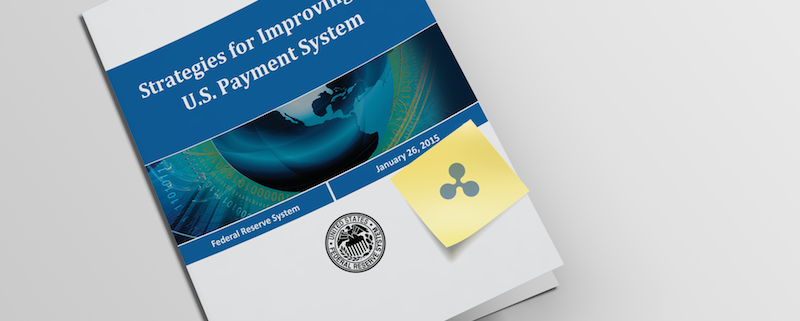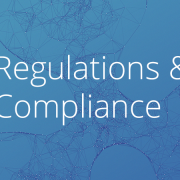The Fed’s Strategy for Improving the U.S. Payment System
The Federal Reserve Bank has released its highly anticipated strategy report for improving the U.S. payment system.
The report follows calls for industry feedback in late 2013—which Ripple Labs participated in (letter, response)—during which the Federal Reserve acknowledged the payment system’s contribution to not only the country’s financial stability but also U.S. economic growth. The need to improve the nation’s underlying infrastructure had reached a critical juncture, the Fed concluded.
To put the significance of the Fed’s strategy report into context, this is the central bank’s first major initiative to upgrade the domestic payment system since the creation of ACH in the 1970s. This is a big deal—and the goal is clear.
The report’s executive summary overviews the current situation:
The Federal Reserve believes that the U.S. payment system is at a critical juncture in its evolution. Technology is rapidly changing many elements that support the payment process. High-speed data networks are becoming ubiquitous, computing devices are becoming more sophisticated and mobile, and information is increasingly processed in real time. These capabilities are changing the nature of commerce and end-user expectations for payment services.
Meanwhile, payment security and the protection of sensitive data, which are foundational to public confidence in any payment system, are challenged by dynamic, persistent and rapidly escalating threats. Finally, an increasing number of U.S. citizens and businesses routinely transfer value across borders and demand better payment options to swiftly and efficiently do so.
It’s also a call to arms:
Responses to the Federal Reserve’s 2013 Payment System Improvement – Public Consultation Paper (Consultation Paper) indicate broad agreement with the gaps, opportunities and desired outcomes discussed in that paper. Recent stakeholder dialogue has advanced significantly, and momentum toward common goals has increased.
Many payment stakeholders are now independently initiating actions to discuss payment system improvements with one another—especially the prospect of increasing end-to-end payment speed and security. We believe these developments illustrate a rare confluence of factors that create favorable conditions for change. Through this Strategies for Improving the U.S. Payment System paper, the Federal Reserve is calling on all stakeholders to seize this opportunity and join together to improve the payment system.
Of particular note are the potential solutions outlined by the report. Of the four solutions suggested, Ripple is the enabling technology described in option two (page 40). Ripple provides neutral payment infrastructure, and its users (banks, networks) set their own rules and governance in accordance with regulations set in their jurisdictions (e.g. the Fed in the U.S.).
Option 2: Facilitate direct clearing between financial institutions on public IP networks using protocols and standards for sending and receiving payments.
A distributed architecture for messaging between financial institutions over public IP networks has the potential to lower costs compared to clearing transactions over a hub-and-spoke network architecture. A central authority would establish common protocols for messaging standards, communication, security and logging transactions.
The Fed also made a statement about the design options it decided to exclude from further consideration, which included all proposals to evolve existing infrastructure such as ACH, wire transfers, and checks. They also decided to forego leveraging telecom infrastructure, a popular route in developing economies following the phenomenal success of M-Pesa.
The other options either involve leveraging the existing ATM/PIN debit infrastructure—which present numerous operational challenges such as “the high variability on implementation feasibility” and issue of “silos that often exist between the retail and commercial units of financial institutions”—or building new infrastructure from the ground up, which, while theoretically ideal as “a potential longer-term objective,” involves “potentially high cost.”
The Fed highlighted one of the primary weaknesses of the current status quo—that standards and protocols had failed to catch up to evolving needs as disparate networks and industry members failed to consistently reach consensus on new rulesets. The Fed pledged its commitment toward further industry coordination and cooperation to address this issue—which in our view underlines the unique advantage and responsibility of the central bank.
- See also: What the Fed Wants the Fed Can’t Have
That’s also why we see Ripple technology as such a compelling solution within the components defined by the Fed that compose a payment system—technology, rules, risk management, and the messaging standard. As an efficient, inexpensive, ruleset-agnostic solution, Ripple provides the technological layer while the Fed and other industry members can play to their strengths and provide complementary components such as rulesets.
Ripple Labs designed the Ripple protocol as such because we believe that local jurisdictions are best suited to define their own standards in connecting fragmented payment networks given the complexity of financial regulation. By applying jurisdiction-specific rulesets on top of a common technical infrastructure like Ripple, the various national payment systems around the world would benefit from increased interoperability and a significant improvement in the speed and cost of cross border payments.
Having analyzed the Fed’s consultation papers over the past two years, we believe Ripple comprehensively achieves many of the desired outcomes outlined by the Fed (page 8-15) along with addressing many of the existing weaknesses highlighted (page 34).
In general, we applaud the Fed’s ongoing initiative to provide a safe, efficient, and broadly accessible payment network. Their active and inclusive approach provides us further confidence in the work we are doing at Ripple Labs.





Hinterlasse einen Kommentar
An der Diskussion beteiligen?Hinterlasse uns deinen Kommentar!